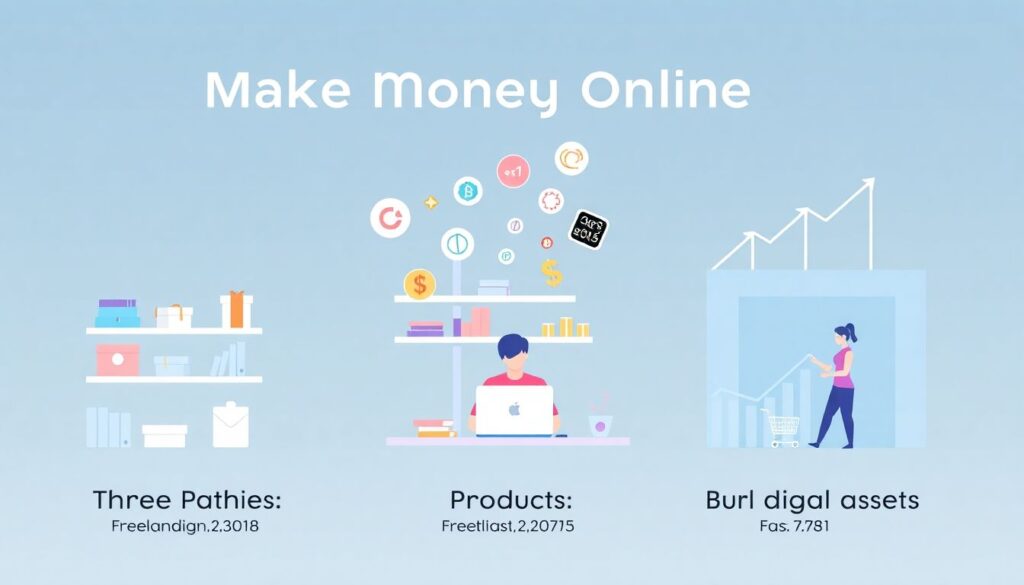Understanding What Makes a Side Hustle Truly Scalable
Стarting with the basics: how to build a scalable side hustle means building something that keeps growing even when you don’t keep adding hours. A scalable project usually relies on systems, content, or products rather than pure time-for-money work. Think digital courses, apps, templates, newsletters with sponsorships, or software-based services. The core idea is simple: do the heavy lifting once, then let technology and processes repeat the value. You’re aiming for a setup where each new customer costs you almost zero extra effort, so revenue can climb without your schedule collapsing. That’s the real difference between “busy hobby” and real business foundation.
Key Criteria of a Scalable Hustle
Before chasing any trendy idea, test it against a few filters. First, can you serve 10x more people without working 10x more? Second, is there a clear, painful problem you’re solving that people already pay for in some form? Third, can you use automation, content, or code to deliver that value repeatedly? Experts who coach creators on how to build a scalable side hustle often add one more rule: choose a market where money already moves. It’s much easier to redirect existing spending than to “educate” people from scratch. When an idea passes these checks, you’re no longer guessing; you’re engineering leverage.
Comparing Approaches: Freelancing, Products, and Digital Assets

There are three big paths most people start with: freelancing, selling products, and building digital assets. If you’re searching for side hustle ideas to replace full time income fast, freelancing (design, writing, coding, consulting) wins in the short term: money shows up quickly and skills translate directly. But pure freelancing doesn’t scale well, because your calendar becomes the limit. Digital products and memberships scale far better, yet take longer to validate. A hybrid route works best for many: start with freelancing to get cash and client insight, then “extract” repeatable problems into templates, courses, or tools that can be sold at scale.
Freelancing and Service-Based Side Hustles
Freelancing is usually the simplest entry point, especially if you’re not sure how to turn side hustle into full time business yet. You sell skills you already have on platforms like Upwork, Fiverr, or directly on LinkedIn. The upside: quick feedback, fast learning about real client needs, and little upfront cost. The downside: every project depends on your time, and burnout shows up quickly if you treat it like a second full-time job. The expert move is to document everything you do—scripts, checklists, deliverables—and slowly convert your most common custom work into standardized offers and then into products.
Products, Content, and Software Assets

Products and digital assets are where the best online side hustles that scale usually live. This includes SaaS tools, Notion templates, paid newsletters, cohort courses, or even niche job boards. Here, your effort goes into building once and selling many times. Technical barriers dropped sharply by 2025: no-code builders, AI-assisted development, and automated marketing stacks let solo creators ship “micro-startups” in weeks. Experts advise starting tiny: solve one narrow, annoying problem for a very specific group and charge real money from day one. When people happily pay, you can then layer upgrades, subscriptions, and adjacent offers without reinventing everything.
Tech Stack and Automation: Pros and Cons in 2025
Choosing the right tech is less about “what’s hottest” and more about reducing friction. In 2025, the main trade‑off is between all‑in‑one platforms (like Kajabi, Shopify, or systemized no‑code suites) and a custom stack glued together with automation tools. All‑in‑one saves time, but you’re locked into their pricing and features. A custom mix gives flexibility and usually lower long‑term costs, but requires more setup and maintenance. Experts recommend starting as simple as possible: one landing page, one payment link, one channel to attract traffic. As revenue grows, you can justify better tooling, advanced analytics, and tailored workflows.
Automation, AI, and the Human Touch
Automation is the engine that lets your side hustle keep running while you’re at your day job. Email sequences, chatbots, scheduling tools, AI-assisted content, and automated reporting free up hours every week. Still, over-automation backfires if you strip away the personal element that builds trust. The 2025 sweet spot is using AI for drafts, research, and routine support, but keeping human judgment for messaging, offers, and relationships. Seasoned solopreneurs treat automation as “power steering,” not autopilot: it helps them respond faster, personalize at scale, and maintain consistent quality without pretending that the business runs itself magically.
Expert-Backed Strategy: From First Dollar to Full-Time
Many creators want a step by step guide to starting a profitable side hustle, but the real experts talk about phases instead of rigid formulas. Phase one: validation—talk to potential customers, sell a simple version, prove demand. Phase two: systemization—turn what worked into repeatable processes and assets. Phase three: scaling—invest in traffic channels, partnerships, and upsells. Coaches who’ve done this dozens of times insist on one non‑negotiable: keep your monthly living expenses stable and covered by your day job until the hustle income is consistent for at least six months. Stability buys you better decisions and less panic.
Practical Steps to Turn It into a Full-Time Business
Here’s a focused roadmap for how to turn side hustle into full time business without blowing up your life:
1. Pick a problem you understand deeply and define a painfully specific audience.
2. Pre-sell a simple offer (service, workshop, template) to 5–10 people before building fancy assets.
3. Document everything that works: scripts, onboarding, deliverables, marketing angles.
4. Turn repeated work into standardized packages, then into products or recurring subscriptions.
5. Gradually shift hours from your job as your hustle consistently replaces a safe portion of your salary.
This staggered approach feels slow, but it compounds into a resilient business instead of a fragile gamble.
Trends Shaping Scalable Side Hustles in 2025
By 2025, three trends stand out for anyone researching how to build a scalable side hustle. First, niche expertise beats generic content: markets reward people who solve tightly defined problems, often in boring industries like compliance, logistics, or internal tools. Second, AI-assisted creation makes it easier than ever to launch, so differentiation now comes from insight and taste, not just output volume. Third, micro-communities and paid memberships grow in value as people look for signal in a noisy internet. If you combine these—clear niche, smart use of AI, and curated community—you build an asset competitors can’t copy overnight.
Choosing the Right Idea for Your Personality and Skills
All the frameworks in the world are useless if you pick an idea that drains you. When evaluating side hustle ideas to replace full time income, pay attention not just to potential profit, but to the kind of work you’ll do daily. Love teaching? Lean into courses and coaching. Prefer tinkering alone? Consider micro-SaaS or automation products. Enjoy connecting people? Community-driven offers and curated marketplaces might fit. Experts often ask a simple test question: “Would you still be curious about this market in five years if it made you zero money for the first six months?” If yes, you’re likely on the right track.

